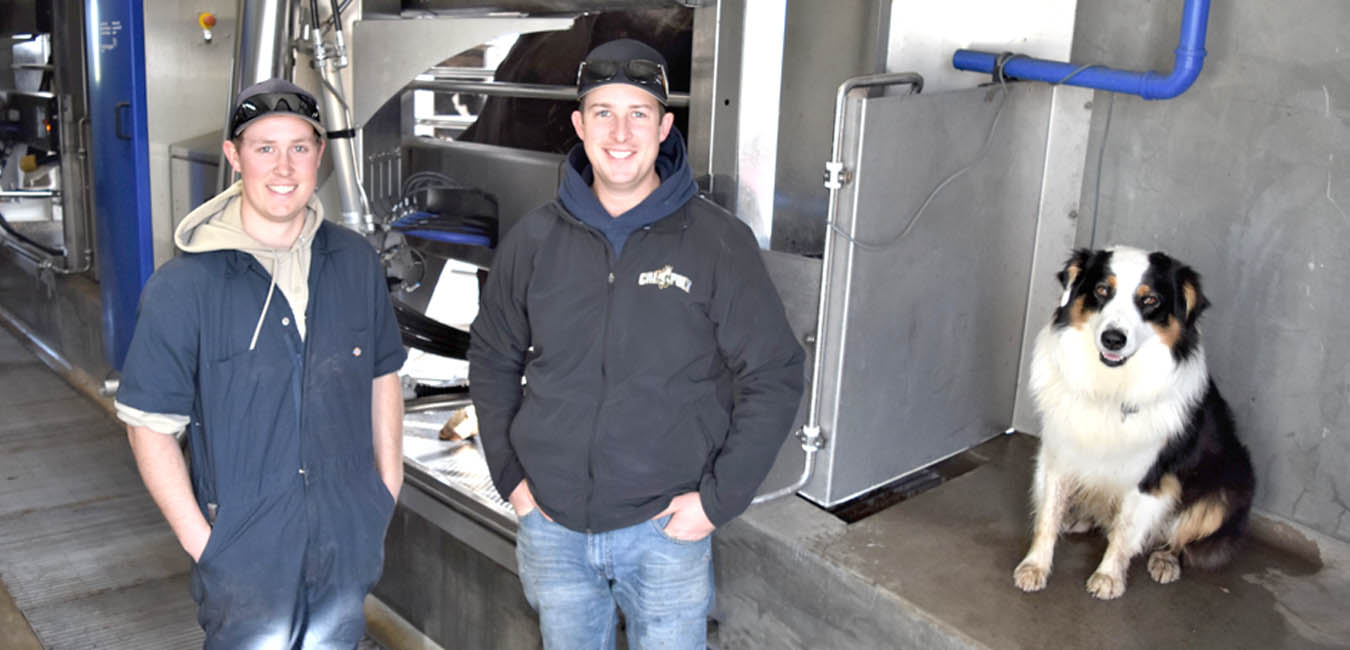
Austin Hunt, herdsman, David Jones, Bourbon, Instagram sensation
Besides investing in superior genetics as Select Sires and Accelerated Genetics customers, Rick and David Jones of Stevinson, CA are also seeing the benefits of an innovative investment made last summer. Jones Farms broke ground in July 2017 to install the first voluntary milking system in California. The new facility, featuring two DeLaval VMS automatic milking machines, sits next to their previously existing parlor where they still milk 800 Holsteins.
Their advanced addition has created excitement and curiosity in California’s central valley for local dairy producers and consumers alike. Those who have met the robots, cleverly named Fred and Ethel, have noticed not only the extreme cleanliness of the site, but also the quiet atmosphere that they work in. The Jones family has made cow comfort a top priority on their dairy and are reaping the benefits of having happy, healthy cows who choose when they want to be milked with ease.
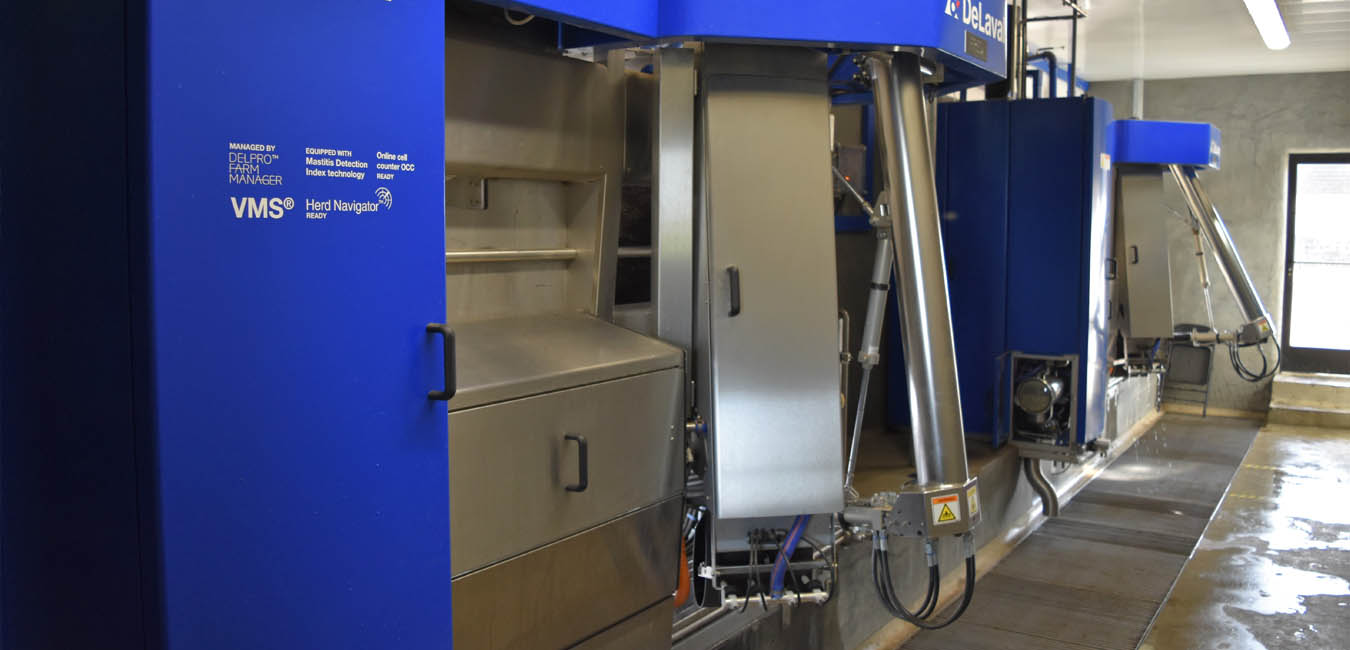 However, David admits the commitment to creating this peaceful environment was a process. “There was definitely a learning curve, both for the people and for the cows,” he said. Before the construction began, over a year was spent working with regulatory agencies to ensure all installation details would be compliant with California regulations. Once the machines were installed and electricity was in place, the process of transitioning the cows to the new parlor began. They started by leaving several gates open to allow the cows to investigate the new site and walk through the milking boxes if they wished.
However, David admits the commitment to creating this peaceful environment was a process. “There was definitely a learning curve, both for the people and for the cows,” he said. Before the construction began, over a year was spent working with regulatory agencies to ensure all installation details would be compliant with California regulations. Once the machines were installed and electricity was in place, the process of transitioning the cows to the new parlor began. They started by leaving several gates open to allow the cows to investigate the new site and walk through the milking boxes if they wished.
Next, they incorporated feed in to the milking boxes and walked each cow through every day for three weeks, keeping them in the box for 30 seconds each time. Finally, they introduced each cow to the feeling of the robots that would be cleaning, applying teat dip, and attaching milk machines to their udder. By the time Jones Farms was ready to starting using the robots for milking on January 10, 2018, the majority of the herd was already willingly coming to the machines, relaxed and comfortable. They have continued to introduce five new cows to the robots each week.
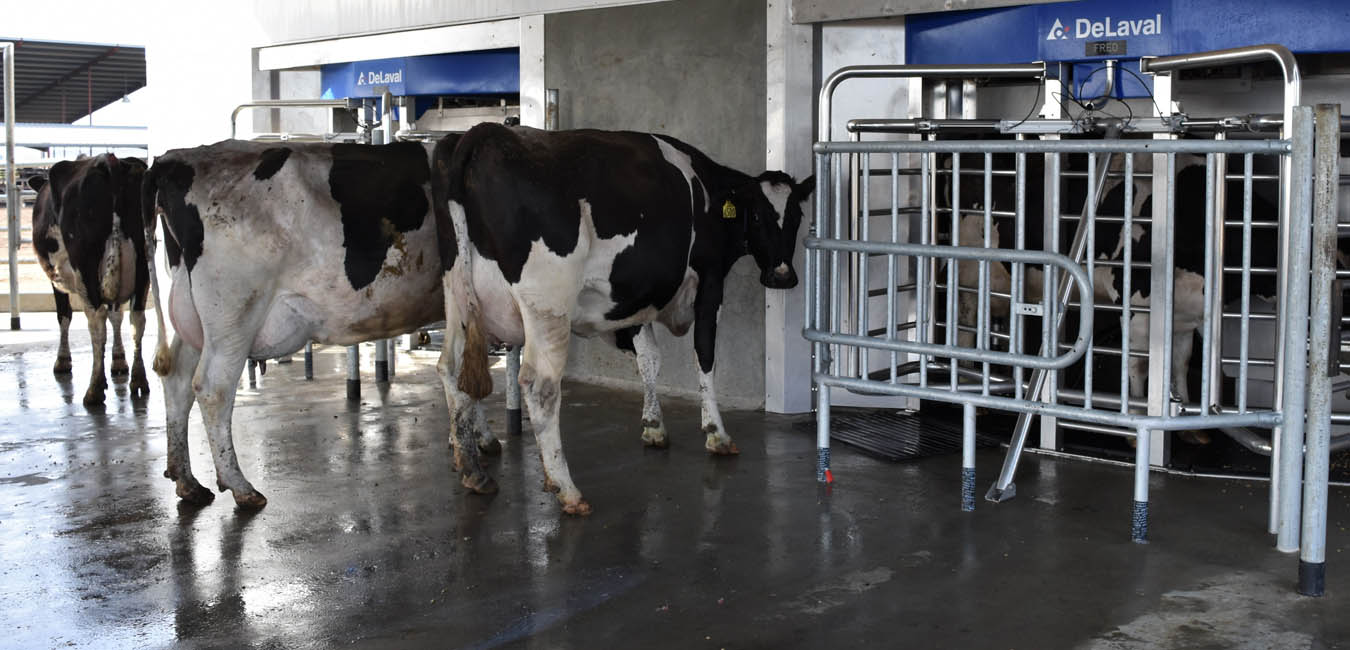
“The transition really wasn’t as difficult as we were predicting,” David admitted. Previously, the cows were being milked three times each day, and today, the 96 cows who have been transitioned in to the robot parlor are averaging 3.2 voluntary milkings per day, giving an average of over 97 pounds.
Jones keeps track of these statistics, along with a massive amount of data collected by the robots, on his computer and through a phone application. At any given time, from any location, he has the ability to see how often each cow is being milked, time of each milking, length of each milking, pounds produced from each quarter, and much more! Those who have access to the system can even control the machines from a remote location if, for example, a cow needs more feed while being milked.
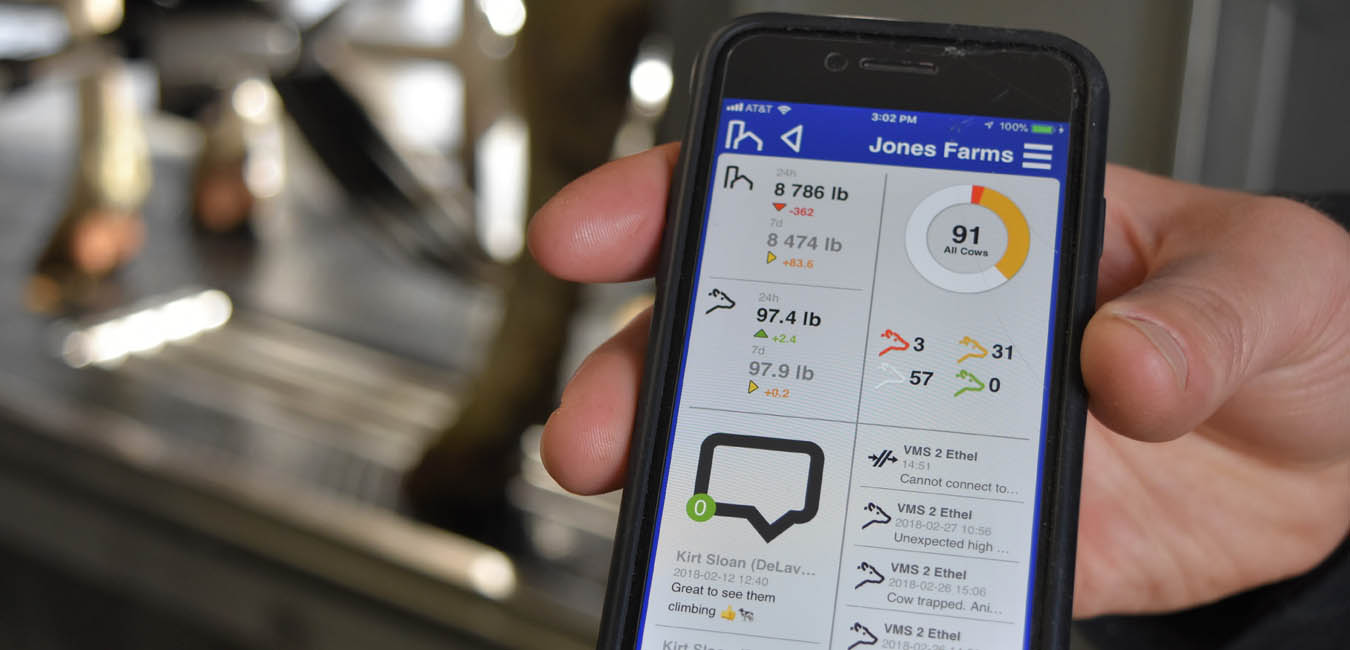
The phone application also sends alerts to Jones if a machine is in need of technical assistance. “Although issues have been minimal, both DeLaval and Modesto Dairy Solutions have been very helpful. Working with these machines has had a learning curve for them too, but at any time of day, I can count on them for assistance to get the issue corrected.”
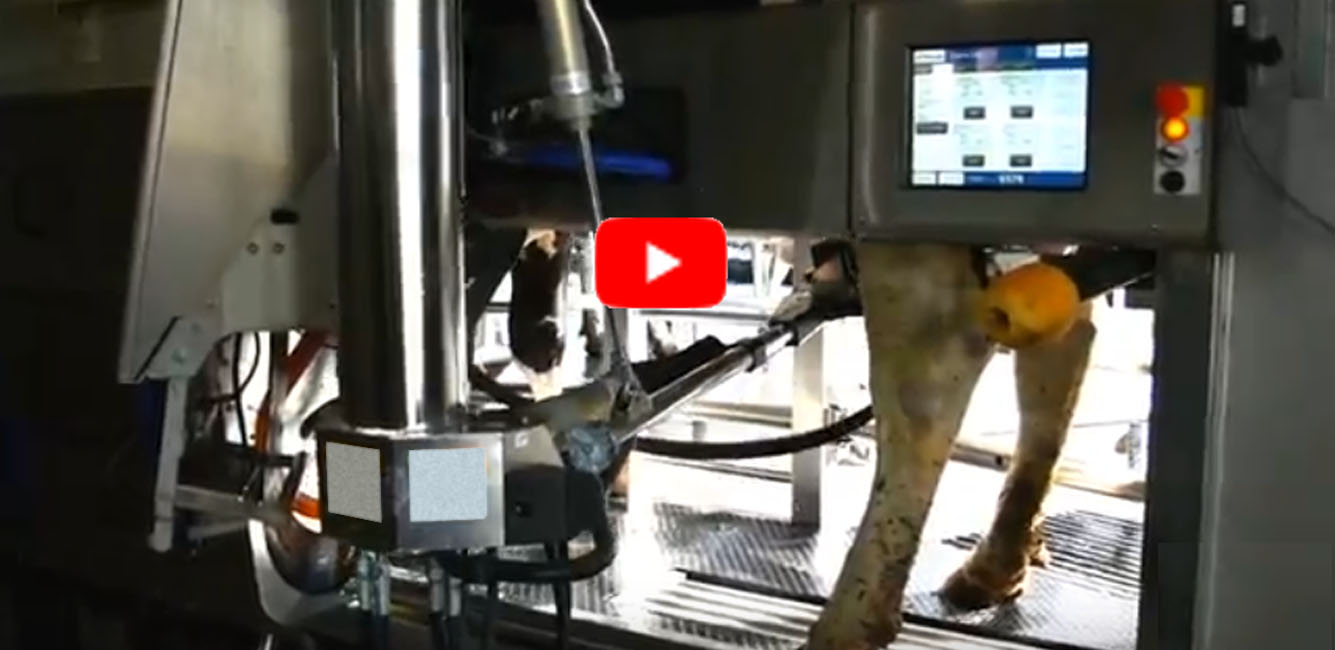 Many producers may be wondering, why go through all this effort, not to mention expense, during a financial downturn in the dairy industry? Despite milk prices falling below production costs, Jones Farms has seen the benefits that make their decision to invest a great one. “Our parlor was operating 24/7 to get our herd milked three times a day, and it was aging. We knew we needed to make a change,” explained David. They had plans drawn for both a rotary and a parallel parlor at several times throughout the brainstorming process, but still foresaw issues with both systems regarding inefficiencies.
Many producers may be wondering, why go through all this effort, not to mention expense, during a financial downturn in the dairy industry? Despite milk prices falling below production costs, Jones Farms has seen the benefits that make their decision to invest a great one. “Our parlor was operating 24/7 to get our herd milked three times a day, and it was aging. We knew we needed to make a change,” explained David. They had plans drawn for both a rotary and a parallel parlor at several times throughout the brainstorming process, but still foresaw issues with both systems regarding inefficiencies.
“There was still the human element in the parlor plans that we were debating, and with that comes natural errors. People and cows working together is something that is never going to go away, but this system really limits room for human error in the process. The DeLaval VMS was the first solution to our concerns that really got us excited!”
Although the robots were more expensive than their alternative parlor upgrade options, Jones Farms has seen savings in areas that they weren’t initially considering. For example, the robots do not use any towels for cleaning teats and they use eighty percent less teat dip than in their original parlor.
Another obvious financial benefit is reduced labor costs. Although Jones Farms has not realized huge savings with only a small percentage of their herd using the new system, they were able to eliminate a part-time employee and reallocate six labor hours per day to other jobs on the dairy. Eventually, Jones Farms hopes to be 100% robotic, eliminating labor as a cost entirely.
“Everyone’s first thought is that we invested in this to save on labor, however I don’t think that should be the conversation. More importantly, we have created a much less stressful environment for our cattle. Before, they were being milked three times a day, spending several hours a day standing on concrete in crowded areas. Now, they spend that time laying down, chewing their cud, drinking water, and relaxing before they voluntarily choose when to be milked. Nobody forces the cows to do anything, creating a really healthy environment,” said Jones.
Besides cow comfort, Jones’ other goal when installing the human-less system was to make the milking process more efficient. Now, Jones can guarantee that milking preparation and procedures are done the exact same way on every cow, every time. Jones Farms Herdsman, Austin Hunt, noted, “Without human error being a factor, the milk process simply cannot get more consistent for the cows than it is now.” This streamlined process not only saves time and supplies, but also allows the cows to know exactly what to expect every time they come to the parlor. Jones chose to start the first and second lactation cows on the robots first because they are curious to see if these consistent milking procedures will extend the longevity of their animals.
“Regardless of our reasoning for installing the system, I’m sure there are still plenty of people who think we’re crazy, and to some extent, they’re right. I don’t think robots and the management style that comes along with them are the right choice for every dairy.” Jones acknowledges that installing robots is still a fairly new technological investment for California dairies, but he hopes that his innovative actions will create awareness and inspire others to take advantage of the technology in the future.
At a time when many dairy producers may be questioning their future in the industry, Jones Farms is investing in theirs. “The future of this industry doesn’t always look bright and shiny, but we have faith in our herd and are thankful for where we are geographically. We enjoy our work, we love our cows, and this is how we are choosing to move forward.”
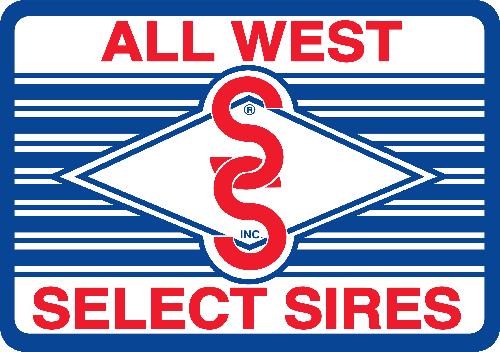
 .
. .
. .
. .
. .
. .
.